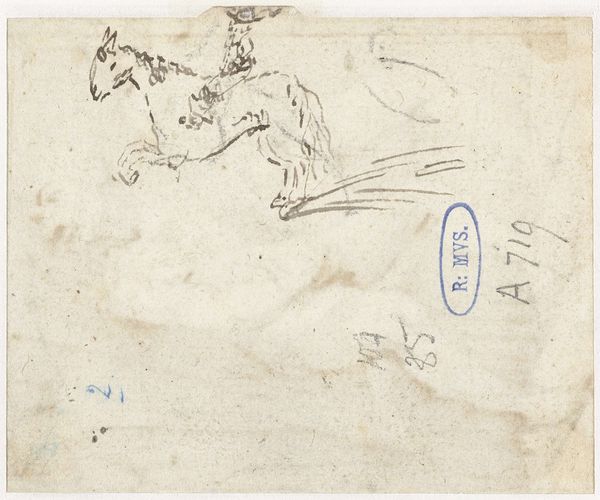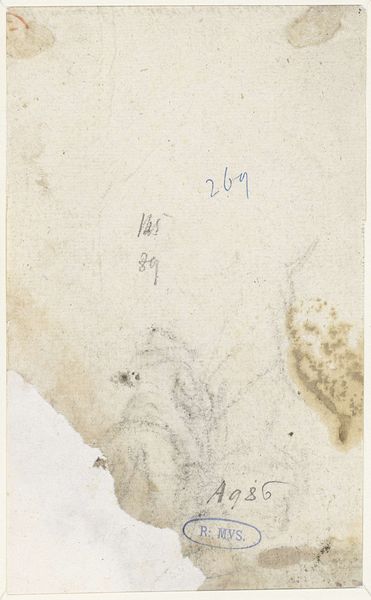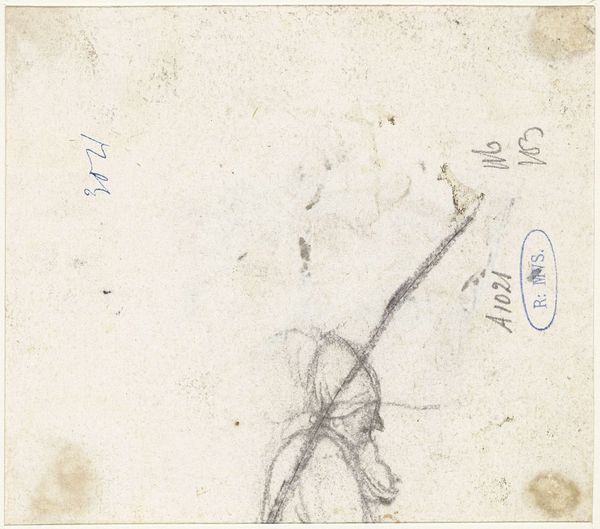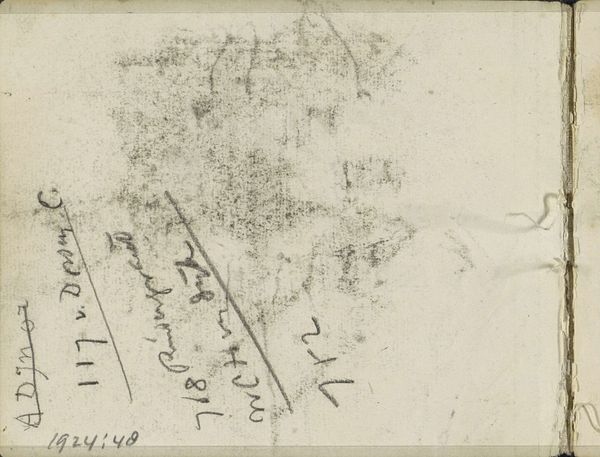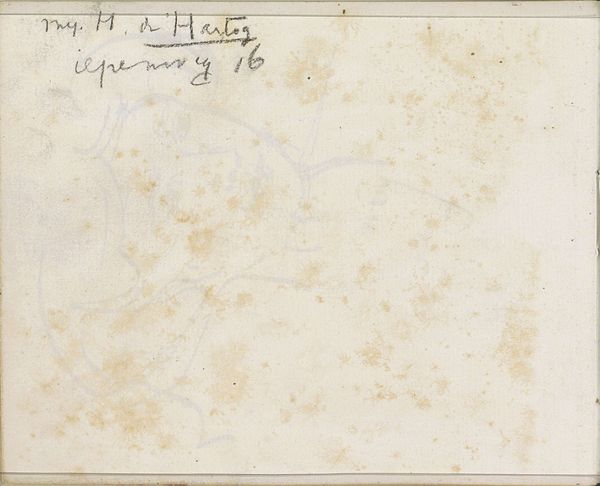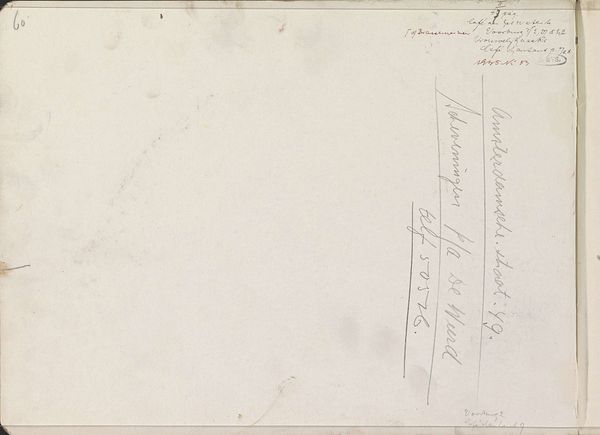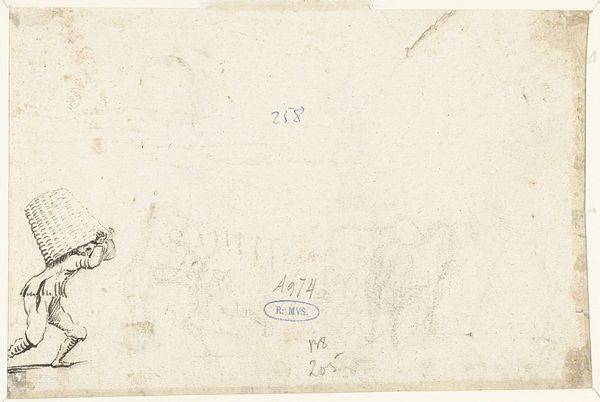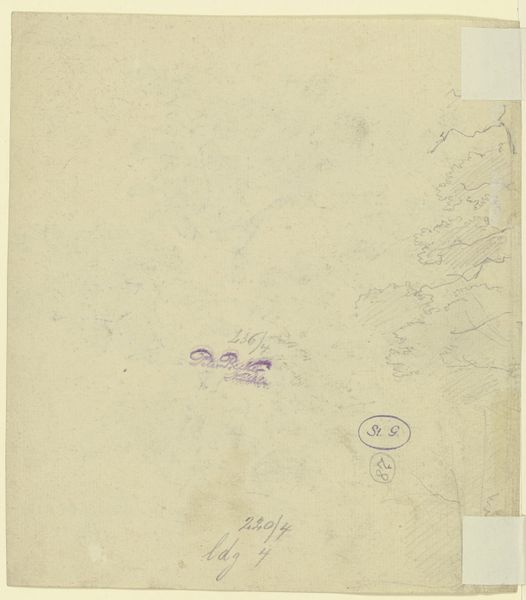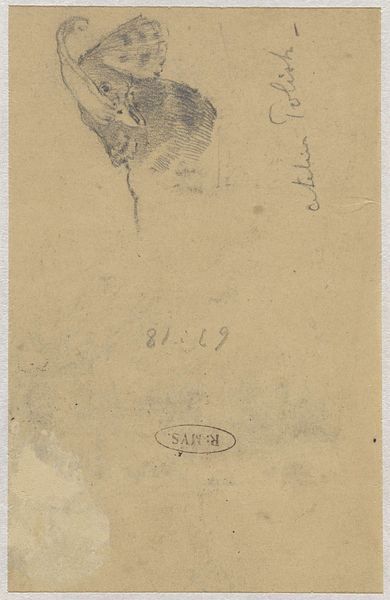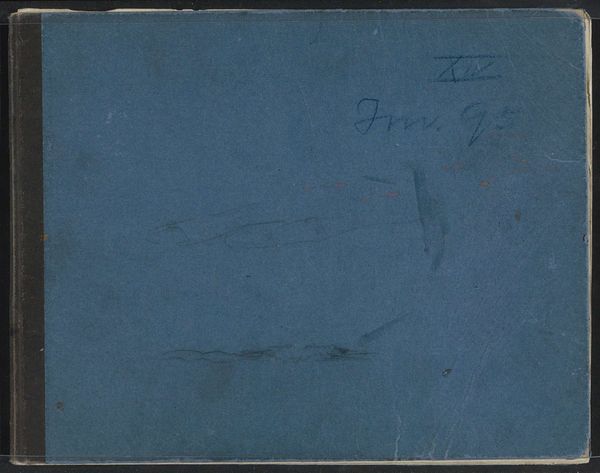
drawing, paper, ink
#
portrait
#
drawing
#
baroque
#
figuration
#
paper
#
ink
Dimensions: height 75 mm, width 111 mm
Copyright: Rijks Museum: Open Domain
Curator: Welcome to the Rijksmuseum. Here we have "Studie van een deel van een geit", or "Study of part of a goat" by Harmen ter Borch, likely created between 1650 and 1656. It's an ink drawing on paper. Editor: It's surprisingly delicate. The faint lines almost disappear into the aged paper. It gives a sense of intimacy. A quick study, but with such immediacy! Curator: It's a prime example of Baroque figuration, wouldn’t you agree? Looking at this piece within the larger context of 17th-century Dutch society, it certainly brings up questions about the human relationship with animals during that time and how they were perceived. Animals are often excluded in history, but here the artist depicts part of one with great care. Editor: The materiality also plays a vital role, don't you think? I'm interested in how the artist employed the ink – it’s applied in very spare amounts, it seems almost economical in the usage of material. It emphasizes that this is a working drawing, probably towards a finished work of art in which animals played a symbolic part. Curator: Yes, it seems more conceptual. Thinking about identity and representation, even the decision to only capture a 'part' raises compelling narratives. Does the partial representation reflect how women were perceived? The act of focusing on one piece—like the horn of the goat here—echoes larger societal power structures, mirroring the fragments within intersectionality theory. Editor: Well, if we consider the socio-economic dimensions of animal labor and the symbolic weight placed upon rural life during this time, there are very real ways the artist highlights this exploitation using what he had at hand. Paper was already a commercial product. Curator: You are probably correct in assuming that its economical material choices show awareness. This quick drawing still poses a lot of relevant questions for today’s dialogues about visibility, labor, and social roles. Editor: Precisely, seeing the goat just beyond the lines offers an introspective moment regarding humanity’s consumption, as we move away with interesting, though slightly unfinished piece. Curator: A brief image—nevertheless offering enduring, socially critical reflection!
Comments
No comments
Be the first to comment and join the conversation on the ultimate creative platform.
